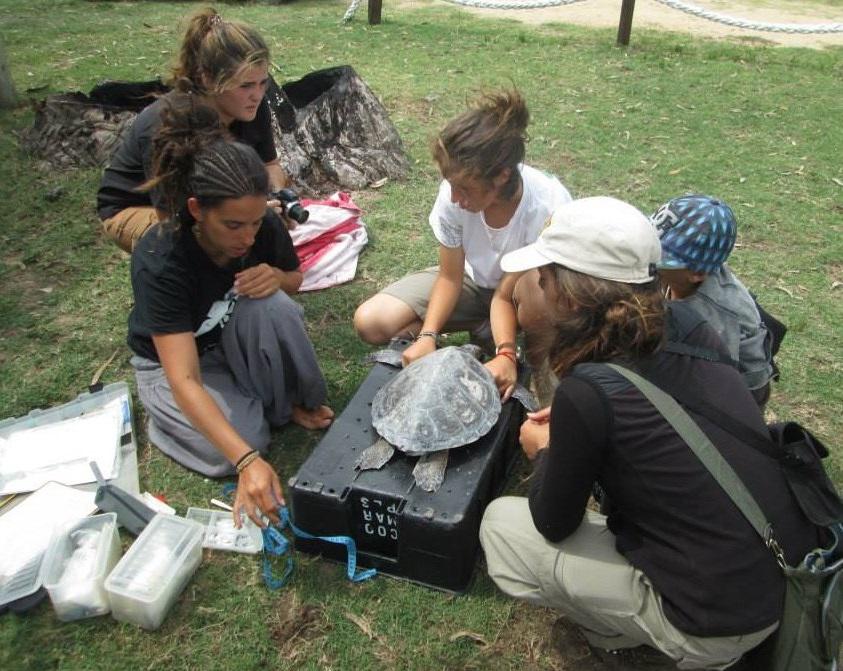Gabriela M Velez Rubio
Other projects
10 Jun 2015
The Endangered Green Turtle in a Plastic Sea: Working from the Protected Areas to Awareness the Uruguayan Society about Marine Debris
29 Nov 2018
Potential Effects of an Invasive Species on the Foraging Ecology of Green Turtle in a Relevant Feeding and Developmental Area in the Southwestern Atlantic Ocean
This project aims to assess the nutritional dependent of juvenile green turtles and characterize the benthic macroalgae community in two marine protected areas of Uruguay. In addition, collaborated with MPAs workers and promote the sustainable ecotourism in these areas.

1st workshop Cabo Polonio.
This project aims to capitalize upon the positive results of previous conservation initiative that focused on threatened marine turtles and their habitats in eastern Uruguay. The MPA of Cerro Verde and Cabo Polonio (Rocha, Northeastern Uruguay) have been shown to be ones of the most important foraging habitats for green turtles (Chelonia mydas) in the South Western Atlantic. Currently these two MPAs are in the process to prepare their management plans, for that is critical to make grounded decisions and recommendations to the stakeholders. From 2001, the NGO Karumbé works in these areas with a strong field research component coupled with an education component. From studies developed by Karumbé we assessed the main causes of death being the entanglement in nets and debris ingestion the mayor threats affect the marine turtles.
The research will focus on a flagship species, the green turtle. Uruguayan coastal waters are a recruitment area for juvenile green turtles after the oceanic life stage. And previous studies in the region proposed the macroalgae as important alimentary item in their diet. It is crucial to understand the nutritional and dietary shifts during their ontogeny and assess the nutritional dependence on macroalgae community. Moreover, this study will provide the first information about the composition of algae present on our shores. Macroalgae are a fundamental component of rocky marine ecosystems, providing food and shelter to many animal species, acting as key species and engineers. In turn, this aspect will make a substantial contribution for the conservation not only of these endangered species, but also of the ecosystem as a whole.
The aim of the outreach component will be to expand local involvement in MPAs and buffer areas conservation. In this particular case, is important and urgent to increase awareness of the area because even newly created; the MPAs and the buffers areas are potentially threatened by the proposed great coastal development in the region. This will be accomplished by a comprehensive public awareness campaign that will target local tourism operators and MPAs workers. This activity not only brings development alternatives for the local communities, furthermore, generates visitor ́s satisfaction and enthusiasm through recreational and education activities in the natural environment.